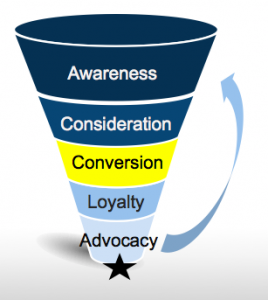
Is your quarterly business review format putting your customer relationships at risk?
Once your prospect becomes a customer, you might focus on typical customer success drivers, like getting your customer to adopt and love your product, or to stay engaged through check-ins and quarterly business reviews.
After all, these efforts result in a happy customer, and a happy customer will continue to be a customer, right?
But while you’re having a quarterly business review with your customer about utilization metrics and project status updates, that same customer’s name is moving through your competitor’s sales funnel—being targeted with marketing campaigns, discussed in sales forecasts, and being put through account strategy planning sheets.
Your competitors will never stop trying to dislodge your customer relationship. And they’re right to never give up. Whoever brings an industry or business problem to your customer’s attention first, wins.
If you’ve ever had a customer reduce their spend with you or go elsewhere for a solution they could have bought through an upsell with you, that’s why. Your competition wasn’t particularly clever. Your customer wasn’t disloyal. You simply didn’t take the steps you needed to strengthen and fortify the relationship.
You left the relationship exposed for someone else to swoop in, bring your customer insight, and take what should have been yours.
So, why does it happen? And how can you prevent it from happening to your customer relationships?
It starts by avoiding these two critical mistakes during your quarterly business review conversations.
Quarterly Business Review Mistakes to Avoid
1. Focusing on the wrong metrics.
In conference rooms all over the globe, business reviews are being conducted right now, outlining how much the customer is utilizing your product, how many hours you’ve billed from their services contract, how many features users have adopted, how well service disruptions have been resolved, and the like.
These metrics prove your busyness. They feel good to talk about. But they aren’t results.
They are leading indicators for larger revenue, expense, cash, or balance sheet goals. Your customer approved the expense of working with you because they believed you would make a meaningful contribution toward their business goals. But Account Management and Customer Success teams often don’t measure or report on business outcomes, nor do they connect the dots between leading indicators and a customer’s corporate goals.
Sometimes that’s simply a reflection of what your contacts want to talk about. But if the team you’re meeting with for quarterly business reviews doesn’t care about or know their business’ goals, you can be sure that you’re not talking to the ultimate decision makers. And that means your relationship is totally vulnerable to competitors who are.
2. Insulating your customer from outside pressures.
Many Customer Success teams keep their conversations singularly focused on the problem customers initially needed to solve.
Perhaps you don’t want to rock the boat or sound like you’re constantly trying to upsell. But it’s a huge mistake to assume that your customer doesn’t want to hear about shifting industry pressures that will put their goals at risk. This opens the door wide for your competitors to walk in.
When you’re presenting these outside pressures, be careful not to present them as earth shattering, disruptive changes—that can invite a competitive evaluation. Instead, make your customer smarter about what’s slowly shifting around them. Do it in a way that puts salve on the part of their brain that fears change.
You need to make your customer feel safe and assured that they’re already working with the partner who can help them solve pressures as they arise.
Even if your customer isn’t ready to act on the pressures you expose now, you were the one who brought them to light—not your competitor—so you get the credit. That strengthens the protective barrier around your relationship.
When your customer feels the urgency around the issues you’ve surfaced, they will know who they can count on to resolve them. They won’t need to look elsewhere.
Build a Protective Barrier
In your quarterly business reviews, creating happy customers can’t be your primary goal. The only real measure of a successful relationship is that your customer chooses to buy from you again. That’s it.
To make that happen, you need to prove you’re helping your customer make progress toward meaningful business goals and you’re ahead of evolving pressures that might put those goals at risk. When you communicate those things in every interaction with your customers, you create a barrier around your relationship that blocks encroaching competitors and increases the likelihood your customer will continue to buy from you.
Check out our e-book, Four Must-Win Commercial Moments in Customer Success, to discover research-backed messaging frameworks for winning more revenue from your existing customers.
Business & Finance Articles on Business 2 Community
(51)








